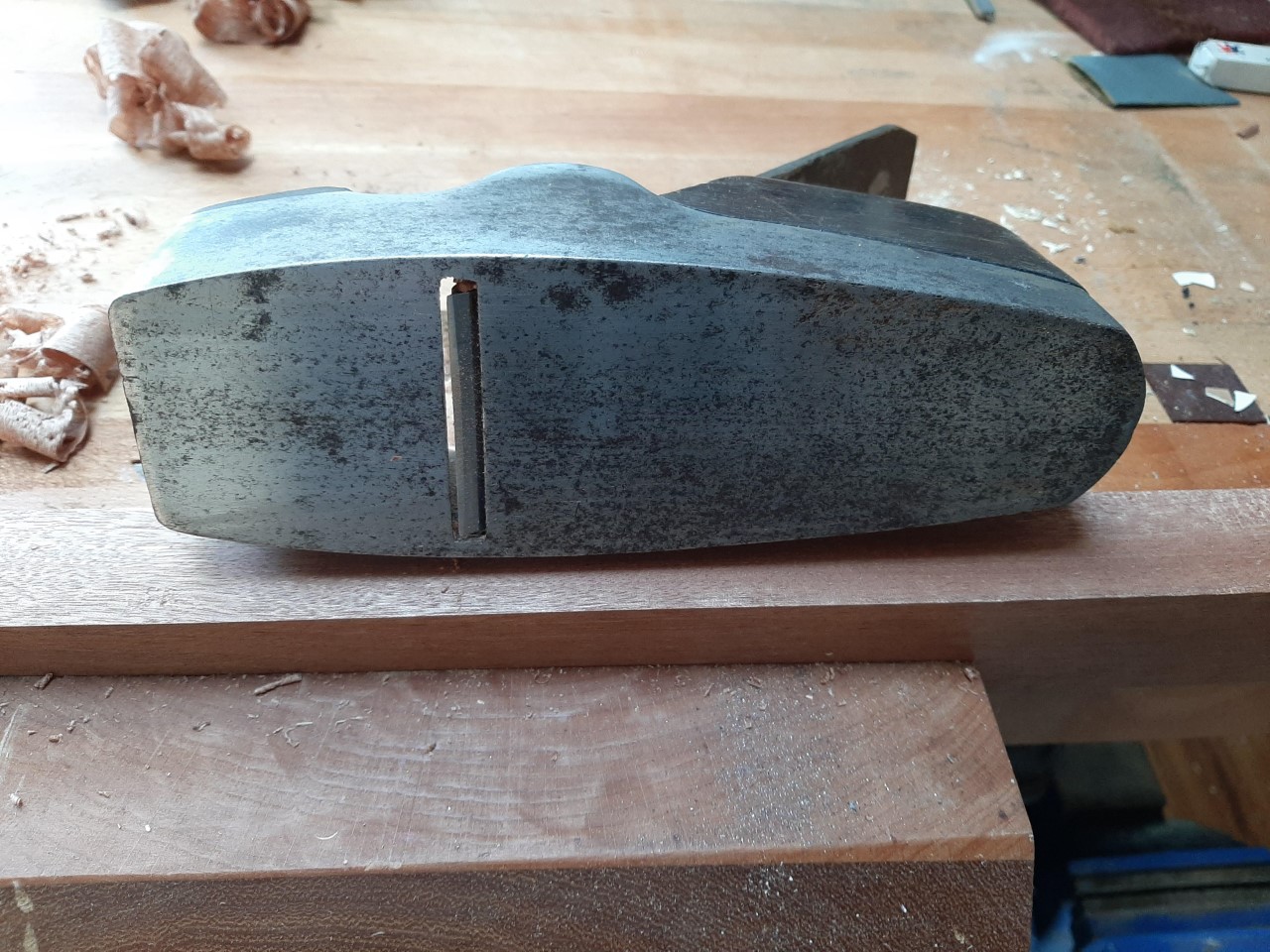I helped my wife’s cousin clear out his mums house after she sadly passed away, amongst all the stuff that was going in the skip was a bucket of his dad’s rusty tools, most of it was junk but there were a couple of rusty planes and a split wooden one as well.
After cleaning one of the planes it turned out to be a Spiers coffin smoother!
I got most of the rust off and sharpened the blade, my question is this, the back infill where the blade sits on is in two pieces, it splits exactly flush with the plane body, is it supposed to be like this or should it be one solid piece?
If it should be one piece, what would be the best way to fix it??
Cheers!
Ferenc
After cleaning one of the planes it turned out to be a Spiers coffin smoother!
I got most of the rust off and sharpened the blade, my question is this, the back infill where the blade sits on is in two pieces, it splits exactly flush with the plane body, is it supposed to be like this or should it be one solid piece?
If it should be one piece, what would be the best way to fix it??
Cheers!
Ferenc









































